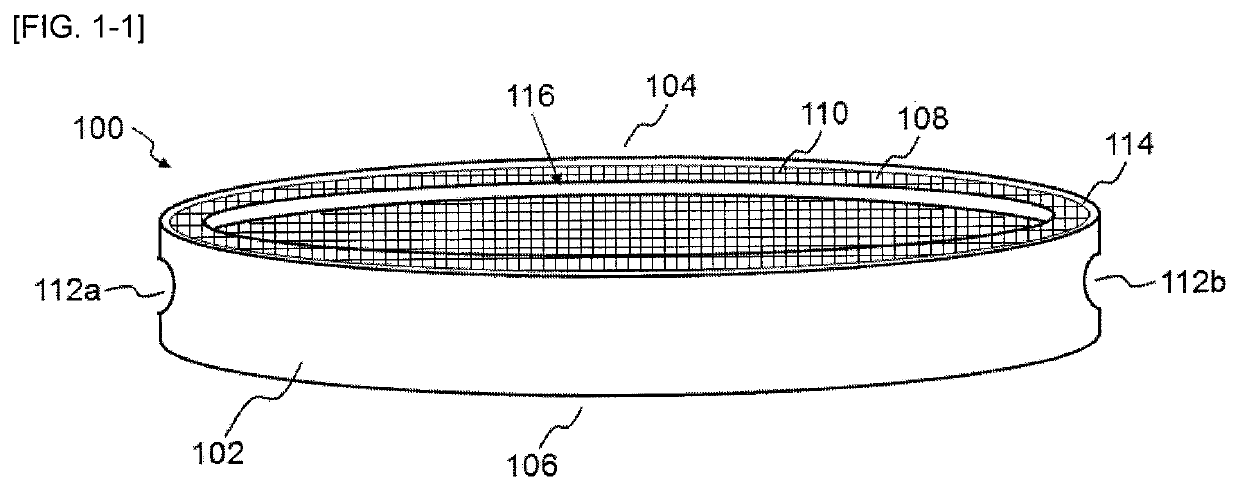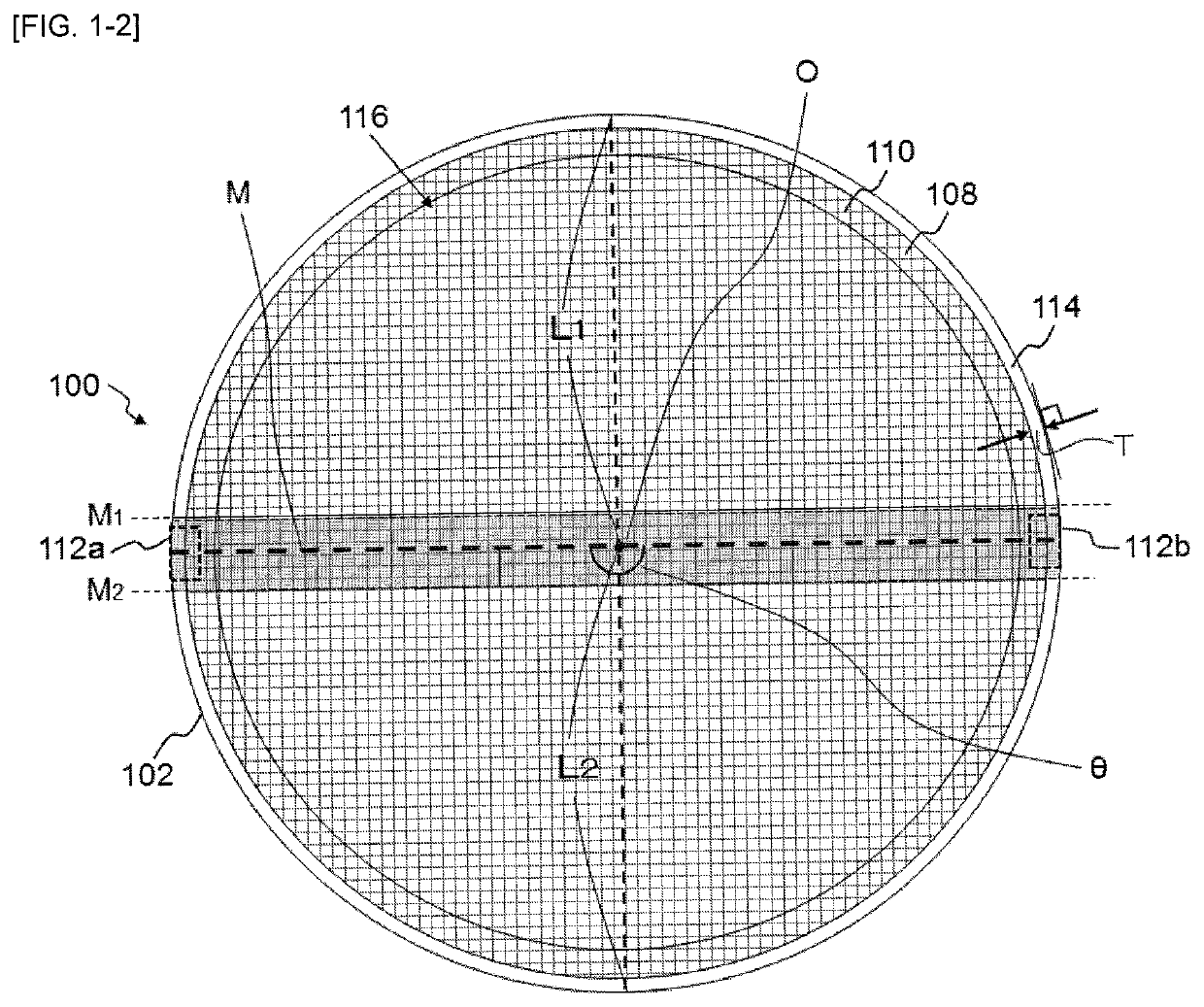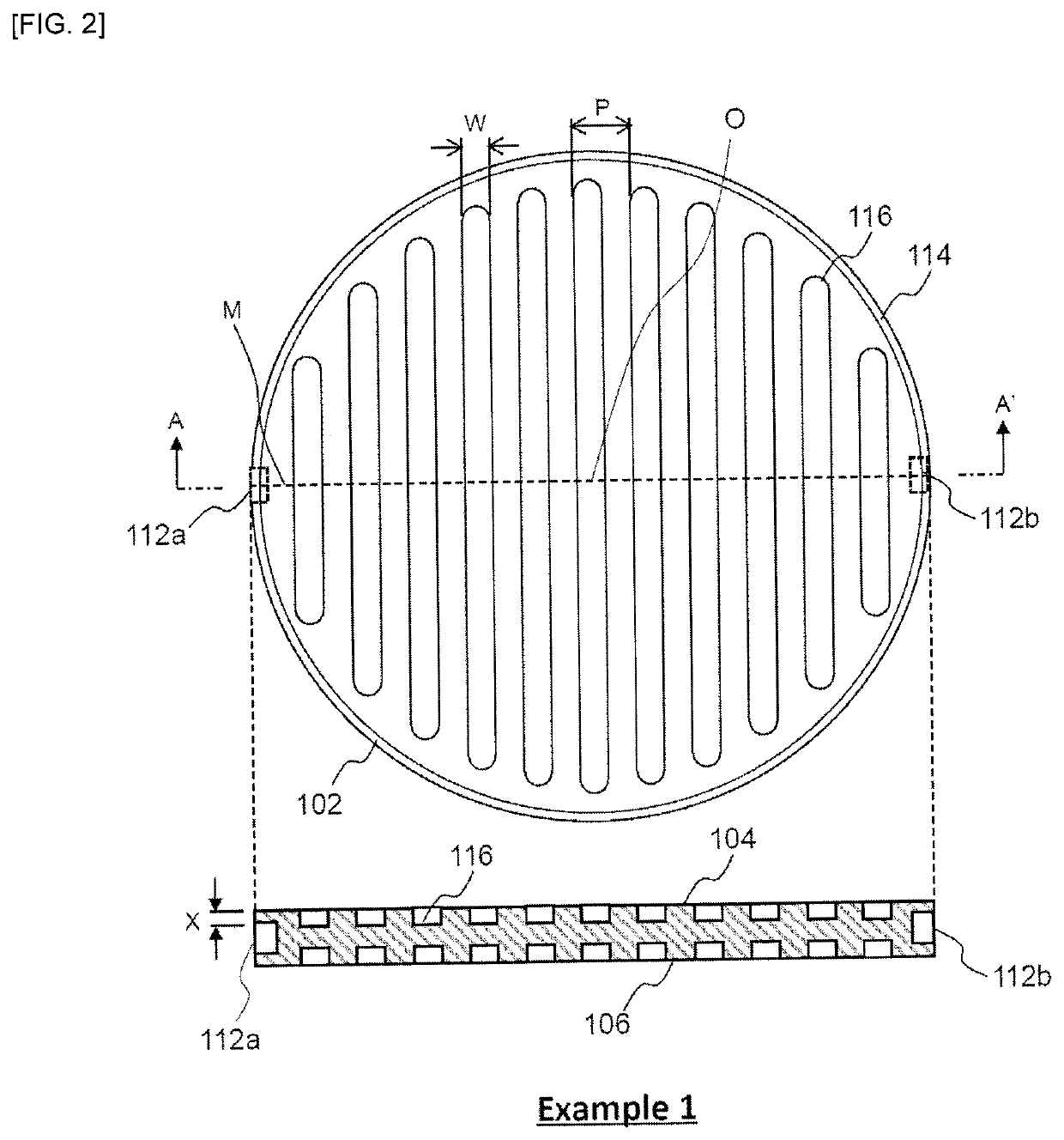Honeycomb structure
a honeycomb structure and honeycomb technology, applied in the field of honeycomb structure, can solve the problems of deteriorating the purification performance of exhaust gas immediately after the engine, insufficient purification of exhaust gas, etc., and achieve the effect of improving the bottom surface shape of the columnar honeycomb structure, and improving the heat generation uniformity of the honeycomb structur
- Summary
- Abstract
- Description
- Claims
- Application Information
AI Technical Summary
Benefits of technology
Problems solved by technology
Method used
Image
Examples
example 1
[0083](1. Preparation of Columnar Green Body)
[0084]A columnar green body was prepared by the same procedures as in Comparative Example 1.
[0085](2. Preparation of Honeycomb Dried Body)
[0086]A honeycomb dried body was prepared by the same procedures as in Comparative Example 1.
[0087](3. Formation of Terminal Connection Portion) Terminal connecting portions were formed by the same procedures as in Comparative Example 1.
[0088](4. Processing of Bottom Surface)
[0089]According to the arrangement shown in FIG. 2, both bottom surfaces of the honeycomb dried body were subjected to cutting work to form a plurality of oval concave portions 116 which extended in a direction perpendicular to a straight line M connecting circumferential centers of the pair of terminal connecting portions when viewed from the bottom and which was line-symmetric with the straight line M as a symmetry axis. In this case, a depth (X) of each concave portion 116 was 2.5 mm, a pitch (P) of the concave portions 116 in th...
example 2
[0095](1. Preparation of Columnar Green Body)
[0096]A columnar green body was prepared by the same procedures as in Comparative Example 1.
[0097](2. Preparation of Honeycomb Dried Body)
[0098]A honeycomb dried body was prepared by the same procedures as in Comparative Example 1.
[0099](3. Formation of Terminal Connection Portion)
[0100]Terminal connecting portions were formed by the same procedures as in Comparative Example 1.
[0101](4. Processing of Bottom Surface)
[0102]According to the arrangement shown in FIG. 3, both bottom surfaces of the honeycomb dried body were subjected to cutting work to form a plurality of cylindrical concave portions each having a circle shape (diameter D=8 mm) when viewed from the bottom, which were line-symmetric with the straight line M as a symmetry axis. In this case, a depth (X) of each concave portion 116 was 2.5 mm, and pitches (P) of the concave portions 116 in the directions parallel to and perpendicular to the straight line M were 10 mm, respectivel...
example 3
[0108](1. Preparation of Columnar Green Body)
[0109]A columnar green body was prepared by the same procedures as in Comparative Example 1.
[0110](2. Preparation of Honeycomb Dried Body)
[0111]A honeycomb dried body was prepared by the same procedures as in Comparative Example 1.
[0112](3. Formation of Terminal Connection Portion)
[0113]Terminal connecting portions were formed by the same procedures as in Comparative Example 1.
[0114](4. Processing of Bottom Surface)
[0115]According to the arrangement shown in FIG. 4, both bottom surfaces of the honeycomb dried body were subjected to cutting work to form one cylindrical concave portion 116 in the form of a circle (radius R=50 mm) as viewed from the bottom, centered at the central axis O of the honeycomb dried body, on each of the bottom surfaces 104, 106. In this case, a depth (X) of each concave portion 116 was 2.5 mm.
[0116](5. Firing)
[0117]The honeycomb dried body was degreased, fired and further oxidized to provide a honeycomb structure ...
PUM
| Property | Measurement | Unit |
|---|---|---|
| voltage | aaaaa | aaaaa |
| voltage | aaaaa | aaaaa |
| angle | aaaaa | aaaaa |
Abstract
Description
Claims
Application Information
 Login to View More
Login to View More - R&D
- Intellectual Property
- Life Sciences
- Materials
- Tech Scout
- Unparalleled Data Quality
- Higher Quality Content
- 60% Fewer Hallucinations
Browse by: Latest US Patents, China's latest patents, Technical Efficacy Thesaurus, Application Domain, Technology Topic, Popular Technical Reports.
© 2025 PatSnap. All rights reserved.Legal|Privacy policy|Modern Slavery Act Transparency Statement|Sitemap|About US| Contact US: help@patsnap.com



